
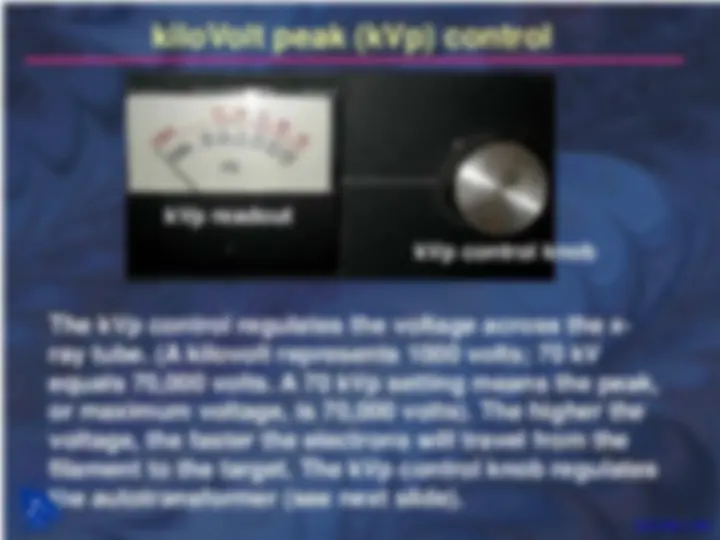
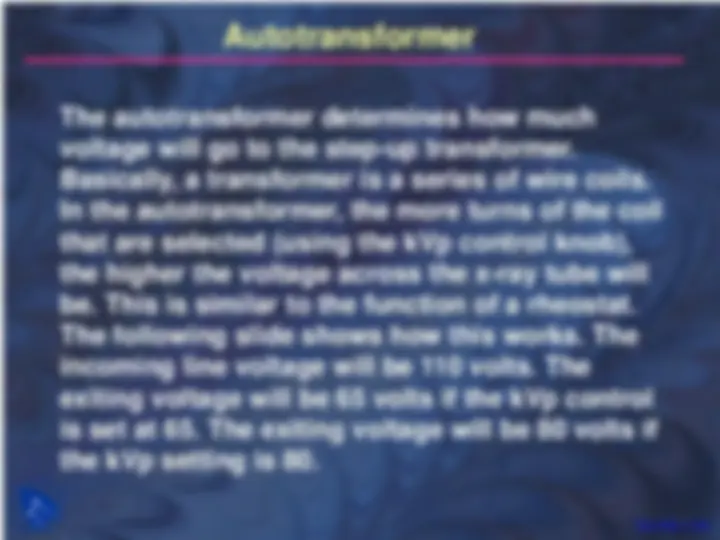
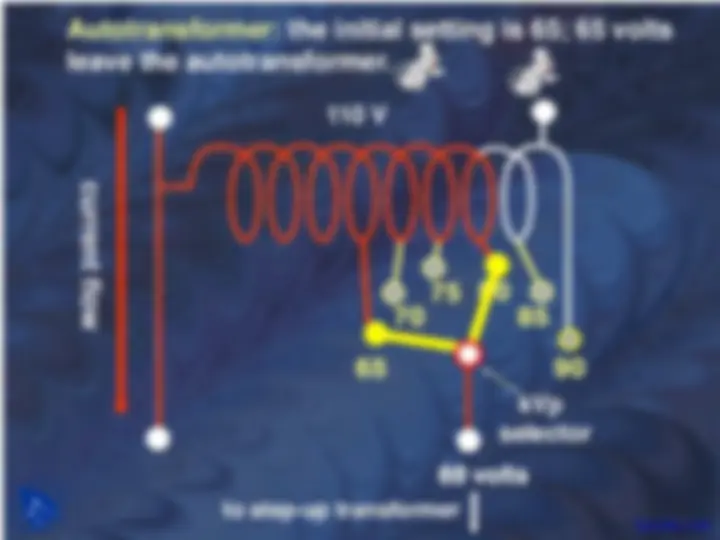
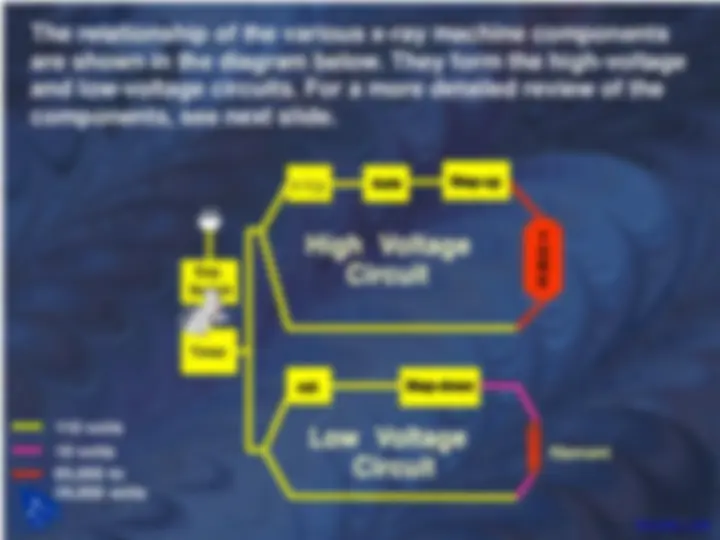
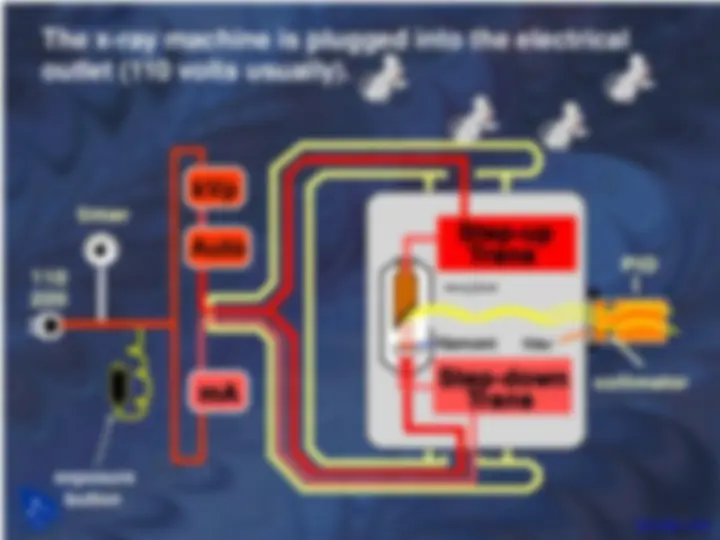
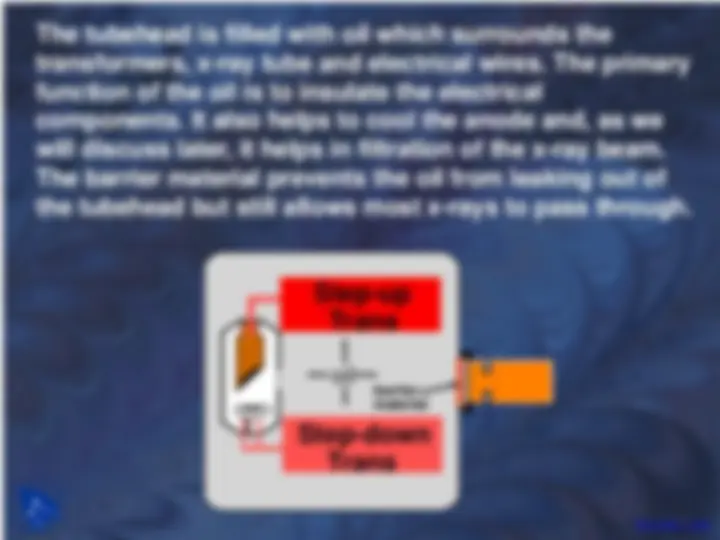


Study with the several resources on Docsity

Earn points by helping other students or get them with a premium plan


Prepare for your exams
Study with the several resources on Docsity

Earn points to download
Earn points by helping other students or get them with a premium plan
Community
Ask the community for help and clear up your study doubts
Discover the best universities in your country according to Docsity users
Free resources
Download our free guides on studying techniques, anxiety management strategies, and thesis advice from Docsity tutors
Step Down Transformer, Autotransformer, Step-Up Transformer, Ultimate Voltage, Control Knob, Turns in Coil, Ray Machine Components, Low-Voltage Circuits, Electrical Outlet are some points form this lecture of Dental Radiology.
Typology: Slides
1 / 10

This page cannot be seen from the preview
Don't miss anything!







Primary
Secondary
110 volts or less
current flow
10 volts
current flow
The current enters the step-down transformer on the primary (input) side and exits on the secondary (output) side. The fewer turns in the coil on the secondary side, the lower the output voltage will be. The primary coil below would have 110 turns, the secondary coil would have 10. (Each loop of the coil is a “turn”; the number of turns in the diagram below has been reduced for easier viewing).
Autotransformer
65 volts
80 volts to step-up transformer
kVp selector
Primary
Secondary
65-90 volts
current flow
65,000 to 90,000 volts
current flow
The current enters the step-down transformer on the primary (input) side and exits on the secondary (output) side. The more turns in the coil on the secondary side, the higher the output voltage will be. The secondary coil in the step-up transformer has 1000 times as many turns as the primary coil. (Again, the number of turns has been reduced for easier viewing).
65,000 to 90,000 volts
kVp
filament
110 volts 10 volts
The relationship of the various x-ray machine components are shown in the diagram below. They form the high-voltage and low-voltage circuits. For a more detailed review of the components, see next slide.
The tubehead is filled with oil which surrounds the transformers, x-ray tube and electrical wires. The primary function of the oil is to insulate the electrical components. It also helps to cool the anode and, as we will discuss later, it helps in filtration of the x-ray beam. The barrier material prevents the oil from leaking out of the tubehead but still allows most x-rays to pass through.
oil (^) barrier material